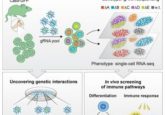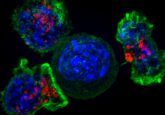Could cytotoxic T cells help us live longer?

Single-cell transcriptomics has revealed that supercentenarians possess unique cytotoxic CD4 T cells which could provide the answers to a longer, healthier life.
Supercentenarians, individuals over the age of 110, tend to live their lives in exceptionally good health with high immunity to infections and cancer. It is believed that discovering the secret to their immunity could provide the key to longevity and successful aging.
Now, researchers from the RIKEN Center for Integrative Medical Science and the Keio School of Medicine (both Tokyo, Japan) have uncovered a characteristic that is solely found in the immune system of supercentenarians – cytotoxic T cells.
“We were especially interested in studying this group of people, because we consider them to be a good model of healthy aging, and this is important in societies like Japan where aging is proceeding rapidly,” commented Kosuke Hashimoto (RIKEN center), first author on this paper.
The study, recently published in the Proceedings of the National Academy of Sciences of the United States of America, utilized single-cell transcriptomic methods to profile circulating immune cells in supercentenarians and younger control groups, in order to identify a potential explanation for the high immune system observed in the long lived.
A total of 41,208 peripheral blood mononuclear cells derived from seven supercentenarians and 19,994 from five younger controls (aged between 50 and 80) were acquired and profiled using single-cell RNA analysis.
- Keeping women young
- X, Y, dead: the declining life expectancy of younger generations
- Designing better treatments for aging
The researchers discovered that, while the number of B-cells was significantly lower in the supercentenarians than the younger controls, the number of T cells was relatively equal regardless of age.
In particular, the team identified a marked increase of CD4 T cells that possessed cytotoxic features in supercentenarians. This was a surprising finding as generally CD4 T cells have helper, not cytotoxic, features under physiological conditions.
The proportion of T cells that were cytotoxic was significantly lower in the controls (10-20%) compared to the supercentenarians (up to 80%). Furthermore, there were relatively low levels in the blood of young donors, suggesting that this is a characteristic of supercentenarians rather than a marker of youth.
“CD4-positive cells generally work by generating cytokines, while CD8-positive cells are cytotoxic, and it may be that the combination of these two features allows these individuals to be especially healthy,” explained study author Piero Carnicini (RIKEN center).
To explore this further, the researchers performed an integrative analysis of the single-cell transcriptome and the T cell receptor repertoire. This revealed that cytotoxic T cells had accumulated through clonal expansion, meaning many of the cells descended from a single ancestor cell.
“We believe that these types of cells, which are relatively uncommon in most individuals, even young, are useful for fighting against established tumors, and could be important for immunosurveillance. This is exciting as it has given us new insights into how people who live very long lives are able to protect themselves from conditions such as infections and cancer,” Carnicini concluded.





